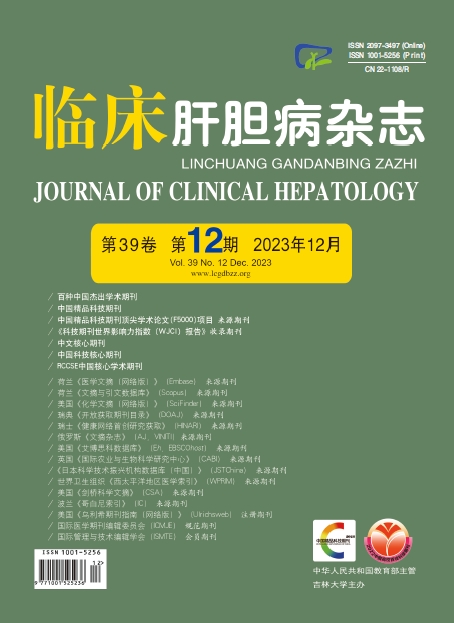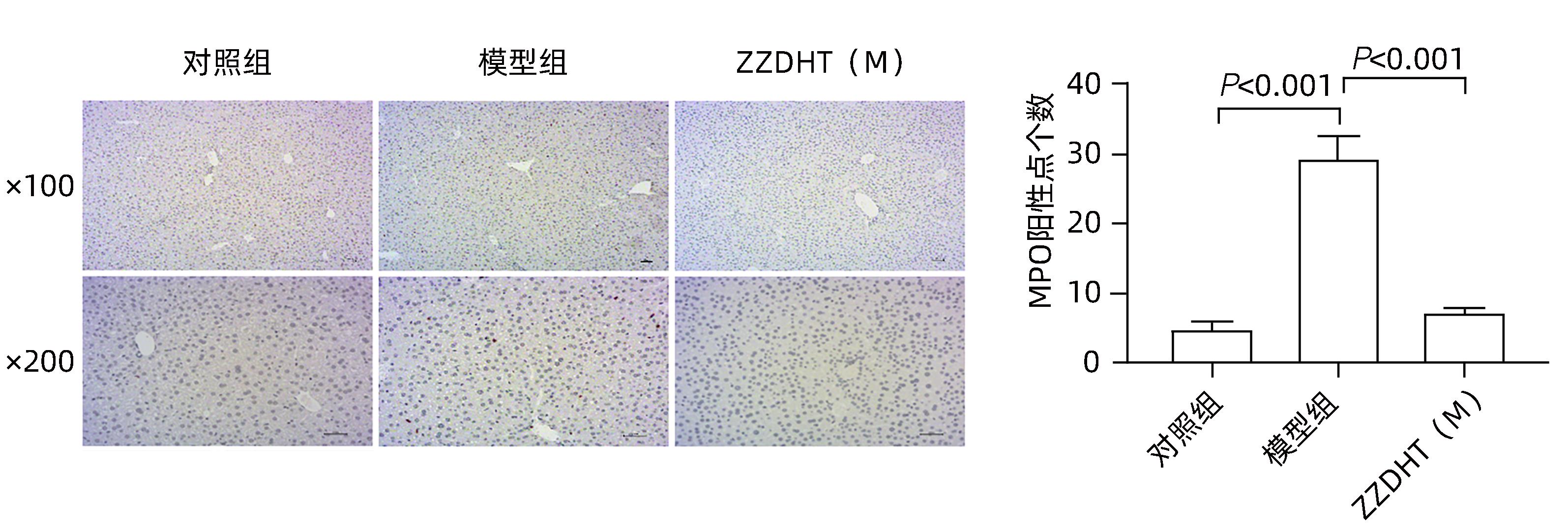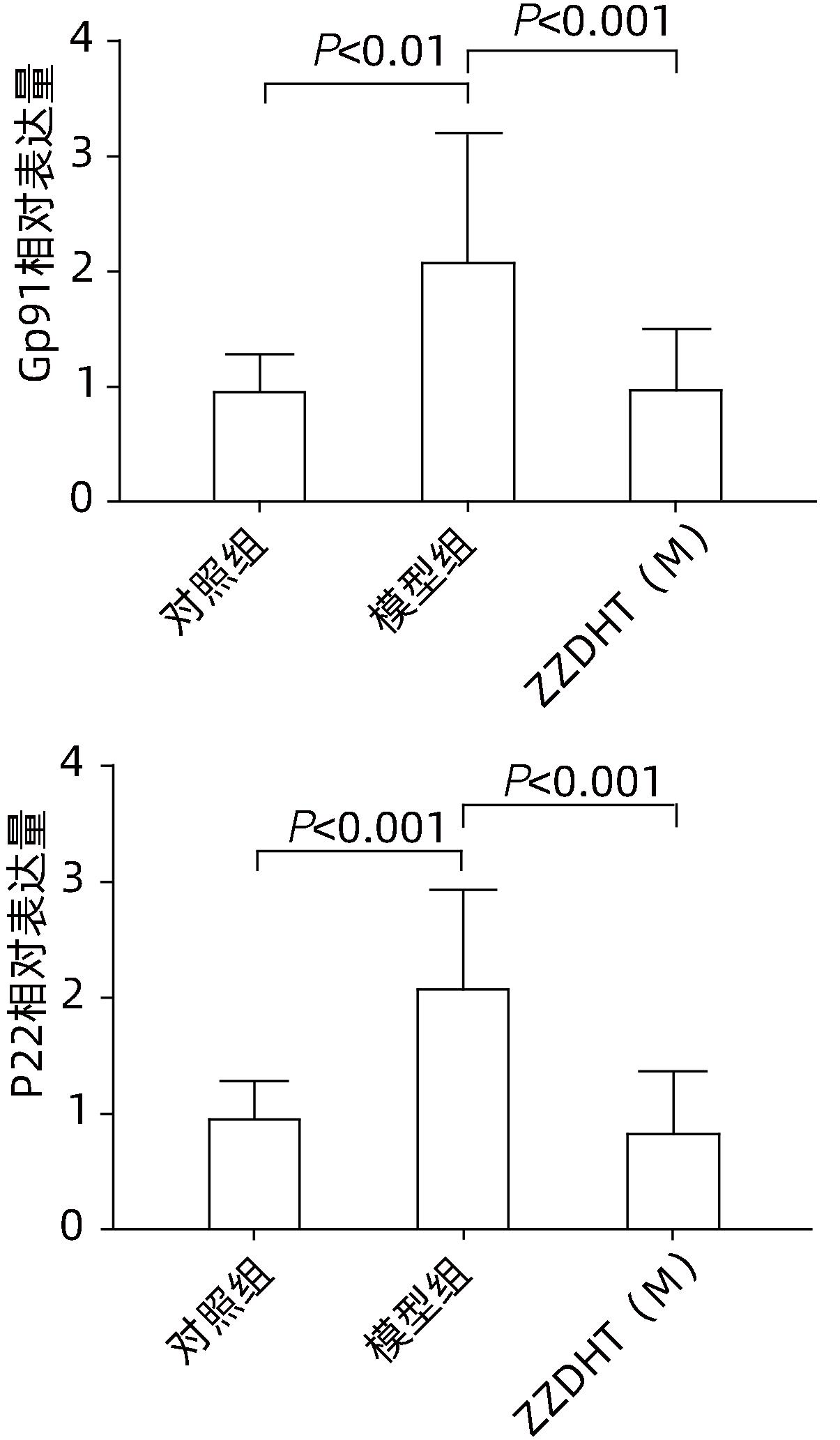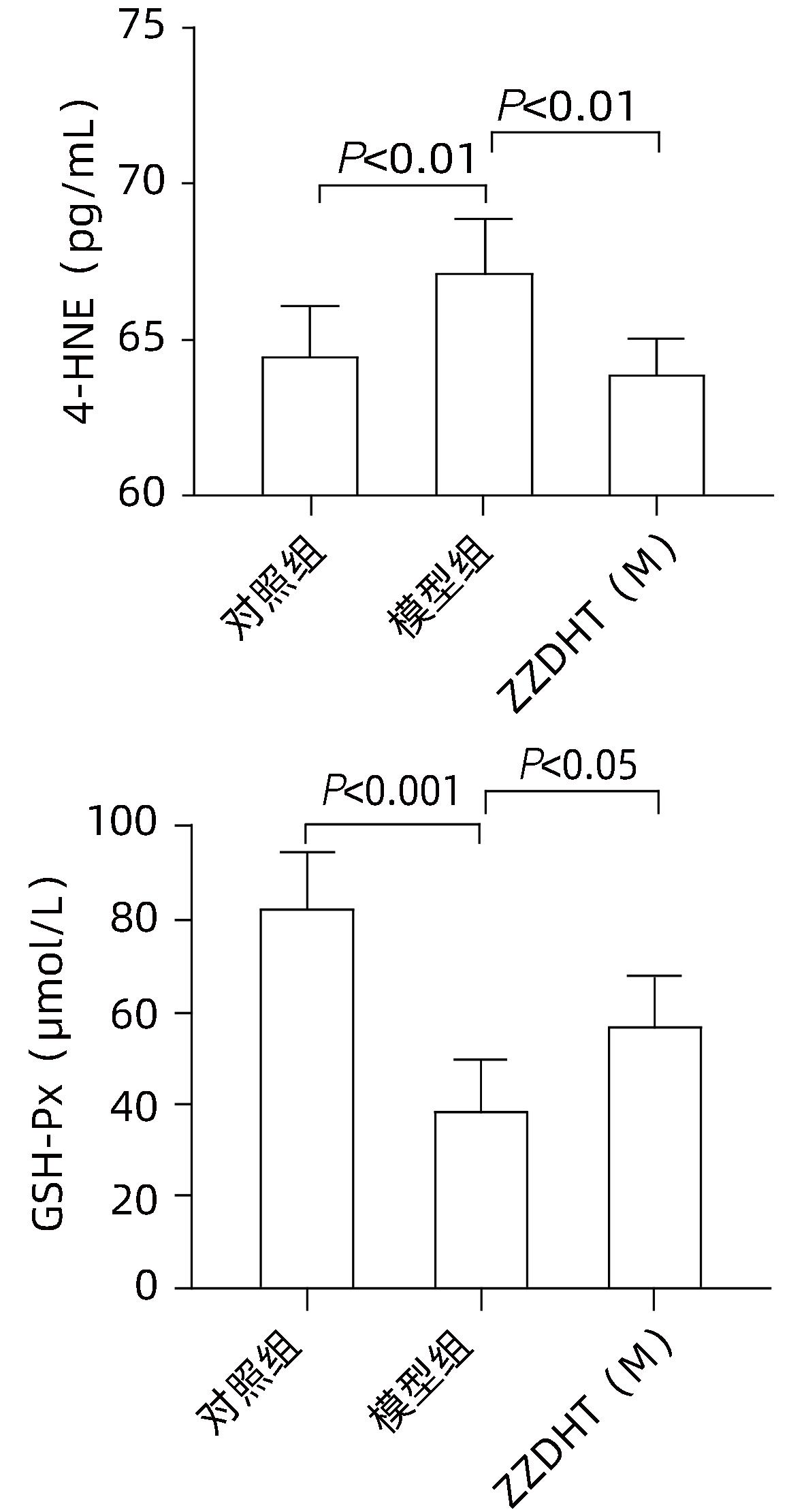| [1] |
SEITZ HK, BATALLER R, CORTEZ-PINTO H, et al. Alcoholic liver disease[J]. Nat Rev Dis Primers, 2018, 4( 1): 16. DOI: 10.1038/s41572-018-0014-7. |
| [2] |
SINGAL AK, BATALLER R, AHN J, et al. ACG clinical guideline: Alcoholic liver disease[J]. Am J Gastroenterol, 2018, 113( 2): 175- 194. DOI: 10.1038/ajg.2017.469. |
| [3] |
OTERO SANCHEZ L, KARAKIKE E, NJIMI H, et al. Clinical course and risk factors for infection in severe forms of alcohol-associated liver disease[J]. Hepatology, 2021, 74( 5): 2714- 2724. DOI: 10.1002/hep.31984. |
| [4] |
ASRANI SK, MELLINGER J, ARAB JP, et al. Reducing the global burden of alcohol-associated liver disease: A blueprint for action[J]. Hepatology, 2021, 73( 5): 2039- 2050. DOI: 10.1002/hep.31583. |
| [5] |
|
| [6] |
AVILA MA, DUFOUR JF, GERBES AL, et al. Recent advances in alcohol-related liver disease(ALD): Summary of a Gut round table meeting[J]. Gut, 2020, 69( 4): 764- 780. DOI: 10.1136/gutjnl-2019-319720. |
| [7] |
WU Y, LI YR, YANG JZ, et al. Research advances in the pathogenesis of alcoholic liver disease[J]. J Clin Hepatol, 2020, 36( 12): 2822- 2825. DOI: 10.3969/j.issn.1001-5256.2020.12.038. |
| [8] |
GUSTOT T, FERNANDEZ J, SZABO G, et al. Sepsis in alcohol-related liver disease[J]. J Hepatol, 2017, 67( 5): 1031- 1050. DOI: 10.1016/j.jhep.2017.06.013. |
| [9] |
QIU P, LI X, KONG D, ZENG SJ, ZU YW, WANG Y, PAN SH New progress in the study of the pathogenesis of alcoholic liver disease[J] Chinese Pharmacological Bulletin, 2014, 02: 160- 163.
邱萍, 李相, 孔德松, 曾善静, 祖亚威, 王允, 潘苏华. 酒精性肝病发病机制研究的新进展[J]. 中国药理学通报, 2014, 02: 160- 163.
|
| [10] |
LUO PP, ZHENG M, ZHANG R, et al. S-Allylmercaptocysteine improves alcoholic liver disease partly through a direct modulation of insulin receptor signaling[J]. Acta Pharm Sin B, 2021, 11( 3): 668- 679. DOI: 10.1016/j.apsb.2020.11.006. |
| [11] |
LI M, HE Y, ZHOU Z, et al. microRNA-223 ameliorates alcoholic liver injury by inhibiting the IL-6-p47phox-oxidative stress pathway in neutrophils[J]. Gut, 2017, 66( 4): 705- 715. DOI: 10.1136/gutjnl-2016-311861. |
| [12] |
LIANG XX, YUAN L. Research progress on protective mechanism of traditional Chinese medicine treatment on alcoholic liver injury[J/CD]. Mod Med Heath Res Electron J, 2021, 5( 8): 135- 138.
梁晓晓, 袁林. 中药治疗对酒精性肝损伤的保护机制研究进展[J/CD]. 现代医学与健康研究电子杂志, 2021, 5( 8): 135- 138.
|
| [13] |
ZHANG JR. Discussion on the Syndrome and Treatment of Jaundice in“Synopsis of the Golden Chamber”//[C]. Zhongjing Theory Branch of the Chinese Society of Traditional Chinese Medicine. Proceedings of the 22nd National Zhongjing Theory Academic Annual Conference. 2014: 5.
张建荣.《金匮要略》黄疸病证治探讨//[C]. 中华中医药学会仲景学说分会. 全国第二十二次仲景学说学术年会论文集. 2014: 5.
|
| [14] |
NIE JJ, WANG X, TANG YP. The progress of alcoholic liver disease treated with combined therapy of traditional Chinese and western medicine[J]. Henan Tradit Chin Med, 2016, 36( 4): 738- 740. DOI: 10.16367/j.issn.1003-5028.2016.04.0316. |
| [15] |
OUYANG HT. Literature research on the origin and development of Zhongjing’s alcoholic jaundice treatment based on syndrome differentiation before Qing Dynasty[D]. Beijing: Beijing University of Chinese Medicine, 2005.
欧阳绘天. 仲景酒疸辨证论治源流与发展的清以前文献研究[D]. 北京: 北京中医药大学, 2005.
|
| [16] |
YANG ZF, LI XY, ZHOU BZ, et al. Protective effect of Zhi Zi Da Huang Tang on rats with alcoholic fatty liver[J]. J Jilin Univ Med Ed, 2017, 43( 3): 555- 560, 669. DOI: 10.13481/j.1671-587x.20170318. |
| [17] |
BERTOLA A, MATHEWS S, KI SH, et al. Mouse model of chronic and binge ethanol feeding(the NIAAA model)[J]. Nat Protoc, 2013, 8( 3): 627- 637. DOI: 10.1038/nprot.2013.032. |
| [18] |
GAO B, CHANG BX, XU MJ. Mouse model of chronic plus binge ethanol feeding(NIAAA model or Gao-binge model)[J]. Infect Dis Inf, 2013, 26( 5): 307- 311.
高斌, 常彬霞, 徐明江. 慢性酒精喂养加急性酒精灌胃的酒精性肝病小鼠模型(NIAAA模型或Gao-Binge模型)[J]. 传染病信息, 2013, 26( 5): 307- 311.
|
| [19] |
YI XK, DU YC, QIAN BL, et al. Protective effect of tanshinone Ⅰ in a mouse model of hepatic ischemia-reperfusion injury[J]. J Clin Hepatol, 2021, 37( 1): 105- 109. DOI: 10.3969/j.issn.1001-5256.2021.01.021. |
| [20] |
DENG DY, XIA YF, ZHAO L. Effect of the TCM hot compress therapy on the gastrointestinal function recovery and serum inflammatory factors in patients undergoing colorectal surgery[J]. J Changchun Univ Chin Med, 2021, 37( 6): 1329- 1332. DOI: 10.13463/j.cnki.cczyy.2021.06.040. |
| [21] |
XIAO TP, WANG MF, AI BC. Medication of four-side syndrome of damp-heat jaundice in synopsis of the golden chamber from Shennong herbal classic[J]. Guangming J Chin Med, 2022, 37( 9): 1540- 1542. DOI: 10.3969/j.issn.1003-8914.2022.09.012. |
| [22] |
CHU JY, YAN R, WANG S, et al. Sinapic acid reduces oxidative stress and pyroptosis via inhibition of BRD4 in alcoholic liver disease[J]. Front Pharmacol, 2021, 12: 668708. DOI: 10.3389/fphar.2021.668708. |
| [23] |
LI HM, HUANG QA, TANG F, et al. Altered NCF2, NOX2 mRNA expression levels in peripheral blood mononuclear cells of pulmonary tuberculosis patients[J]. Int J Gen Med, 2021, 14: 9203- 9209. DOI: 10.2147/ijgm.s339194. |
| [24] |
YU HH, YANG YH, CHIANG BL. Chronic granulomatous disease: A comprehensive review[J]. Clin Rev Allergy Immunol, 2021, 61( 2): 101- 113. DOI: 10.1007/s12016-020-08800-x. |
| [25] |
KIM HG, HUANG MH, XIN Y, et al. The epigenetic regulator SIRT6 protects the liver from alcohol-induced tissue injury by reducing oxidative stress in mice[J]. J Hepatol, 2019, 71( 5): 960- 969. DOI: 10.1016/j.jhep.2019.06.019. |
| [26] |
CENI E, MELLO T, GALLI A. Pathogenesis of alcoholic liver disease: Role of oxidative metabolism[J]. World J Gastroenterol, 2014, 20( 47): 17756- 17772. DOI: 10.3748/wjg.v20.i47.17756. |
| [27] |
SUN J, FU JQ, LI L, et al. Nrf2 in alcoholic liver disease[J]. Toxicol Appl Pharmacol, 2018, 357: 62- 69. DOI: 10.1016/j.taap.2018.08.019. |
| [28] |
GUTHRIE LA, MCPHAIL LC, HENSON PM, et al. Priming of neutrophils for enhanced release of oxygen metabolites by bacterial lipopolysaccharide. Evidence for increased activity of the superoxide-producing enzyme[J]. J Exp Med, 1984, 160( 6): 1656- 1671. DOI: 10.1084/jem.160.6.1656. |
| [29] |
YING WH. NAD +/NADH and NADP +/NADPH in cellular functions and cell death: Regulation and biological consequences[J]. Antioxid Redox Signal, 2008, 10( 2): 179- 206. DOI: 10.1089/ars.2007.1672. |
| [30] |
LIU TT, LIU JK, LI SL, et al. Advances in the mechanism of action of silent information regulator 1 in alcoholic liver disease and related pharma-ceutical studies[J]. J Clin Hepatol, 2022, 38( 12): 2841- 2845. DOI: 10.3969/j.issn.1001-5256.2022.12.030. |
| [31] |
LI Q, TAN JX, HE Y, et al. Atractylenolide III ameliorates non-alcoholic fatty liver disease by activating hepatic adiponectin receptor 1-mediated AMPK pathway[J]. Int J Biol Sci, 2022, 18( 4): 1594- 1611. DOI: 10.7150/ijbs.68873. |
| [32] |
HYUN J, HAN J, LEE CB, et al. Pathophysiological aspects of alcohol metabolism in the liver[J]. Int J Mol Sci, 2021, 22( 11): 5717. DOI: 10.3390/ijms22115717. |
| [33] |
|










 DownLoad:
DownLoad:














